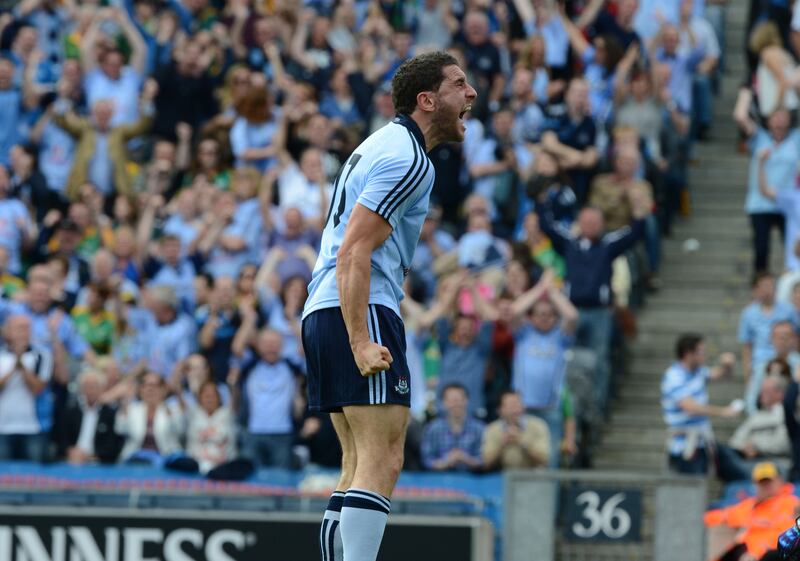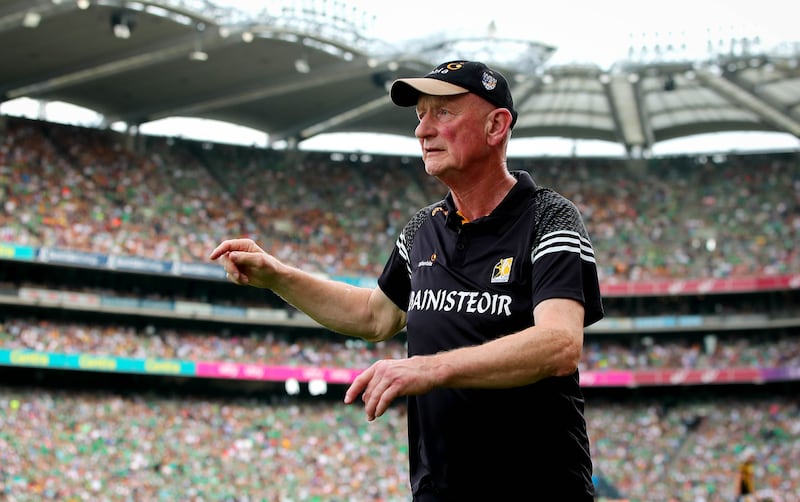If one complaint about the current football championship format is that it takes a lot of fixtures to get down to brass tacks, could the same be said about the hurling, which so far this year has failed to generate any speculation beyond Limerick as winners?
Such downbeat expectations of the championship aren’t new to Gaelic games but the evidence is that domination by specific teams is becoming more common.
Already this century there has been a first hurling four-in-row, Kilkenny, since Cork in the 1940s and only the second in nearly 140 years of GAA history.
Football had experienced the same achievement just three times, once by Wexford, and twice by Kerry, until the 2010s, during which Dublin began a run that included breaking the five-in-a-row barrier for the first time and adding a sixth for good measure.
Malachy Clerkin: The GAA should make more of St Patrick’s Day - and more of its intercounty stars
Shefflin trying to devise a way for Galway to halt Limerick juggernaut
Munster CEO defends broadcast coverage of province’s hurling championship
Sports Review 2023: Murphy’s incredible reflex save showed hurling’s facility for the impossible
Now, Limerick are odds-on before a ball is pucked in the Championship to become the latest four-in-a-row county. Already they have won four in five years, a mark that has been hit by only the big three, Kilkenny (1909-13), Cork (1890-94) and Tipperary (1961-65).
Cork (1941-46) and Tipp (1895-1900) have also recorded five in six years.
In cumulative terms, the standout records are Kilkenny (2006-2015) and Dublin (2011-2020), both of whom have won eight All-Irelands in 10 years, followed closely by Kerry (1978-84) with eight out of 12 championships.
Those three teams were all active within the past 45 years and the two highest-achieving, this century.
Now Limerick embark this weekend on a championship that is heavily favoured to add to that roll call.
Are these recurring examples of historically outstanding serial successes just coincidental or has something happened to encourage the trend?
Have games development and sports science advanced to the point where natural advantages can be accentuated and potential realised with fewer limitations?
In all cases, this level of domination begins with an atypically talented cohort of players. Limerick won the old under-21 hurling All-Ireland in 2015 and ‘17. Between those two teams, they found 12 starters for senior finals.
Counties win under-age All-Irelands all the time so those victories in themselves don’t count as a reason for the scale of success. After all, Limerick know better than most the limitations of such achievement. Between 1999 and 2001 they became the first county to produce three-in-a-row under-21 All-Ireland winners, who didn’t go on to replicate that once at senior level.
Cohorts differ. A team of even impossibly talented young hurlers can only win so much at under-age.
This generation of Limerick players have been catching attention for a decade, firstly as a strangely underperforming minor cohort, who nevertheless won a couple of Munster titles and reached All-Ireland finals and later as a gifted group who, distributed around third-level colleges, made a big impact on the Fitzgibbon Cup with UL, LIT and MIC.

How easy is it to find a group of such players within the one generation? Population is probably the main determinant. Of the counties we’re talking about, only Kilkenny are not in the top dozen most populous, and they’re a halfway county at 16th.
Former Roscommon manager Martin McDermott explained in an interview with The Irish Times four years ago the scale of the challenge for his county even in Connacht.
“We pick from a population that is a third the size of Mayo and less than a quarter than that of Galway. I do genuinely think we pull above our weight. It is a constant battle. And we don’t fear it but it is a big step because we do not have that depth of numbers. As someone once said, the more milk you have, the more cream you have.”
Kilkenny under Cody were supplied with a stream of minor and under-21 All-Ireland winning teams, which included all of their outstanding individuals, whereas Dublin’s success was built on four All-Ireland winning under-21 teams, supplemented by big influences, such as Bernard Brogan, Diarmuid Connolly, Paul Flynn, Michael Fitzsimons and especially Stephen Cluxton.
Management is obviously a big influence. John Kiely was in charge of Limerick when they won those under-21 All-Irelands and he has proved, like former Dublin manager Jim Gavin, adept at delegating responsibilities.
Paul Kinnerk is by consensus the most innovative and creative coach in Gaelic games and has stayed with Limerick. Caroline Currid, the foremost performance psychologist in Irish sport and associated with three other All-Ireland winning teams, has been on board for the four wins to date.
None of the architecture of intercounty success is cheap, but people focusing on the support of JP McManus are missing the point. McManus has been supporting Limerick for years, long before the rest of the country became resigned to their success.

Similarly, Gavin used his interest in other sports to import ideas – of which the basketball influence was the most publicised – and delegated coaching to long-term associate Declan Darcy and also Jason Sherlock.
Even Brian Cody, the longest-serving manager among these teams, brought in former Laois footballer and manager Michael Dempsey, as a fitness and S+C coach.
Finding these managers isn’t straightforward. Being an All-Ireland medallist isn’t necessarily a requirement, as Kiely demonstrates; but, apart from Mick O’Dwyer in Kerry, a former Footballer of the Year, others had lower-key intercounty careers.
Cody, who captained both minor and senior All-Ireland winning teams, looks an obvious choice but wasn’t seen as such at the time of his appointment. Gavin won an All-Ireland in 1995 with Dublin but it was his work in tandem with Darcy on under-age teams that, as in Kiely’s case, stated his credentials.
If a county can produce the players and command the resources to recruit a management team to make the best of them, is it now a guaranteed transition to winning All-Irelands?
Maybe not but, as recent indicators show, it’s a very good start.
















